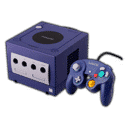
Summary:
Pokémon Legends: Z-A pushes online battles into a faster, real-time flow where Speed doesn’t decide everything. That change alone shuffles the pecking order. Bulky attackers and well-rounded threats thrive, while frail glass cannons and one-trick walls crumble under constant pressure. Right now, Metagross, Excadrill, and Gyarados set the pace with reliable damage, strong resistances, and flexible coverage. On the other end, a few picks invite trouble: Delibird simply lacks the stats to survive, Carbink folds to the Steel-heavy environment despite its towering defenses, and Aegislash—once a terror—suffers during form changes that leave it exposed at the worst moments. If you’re climbing ranked, benching these liabilities is the easiest power-up you can give yourself. We break down why each one struggles, outline safer replacements that slot into the same jobs, and share quick rules for selecting sturdier cores. You’ll walk away with matchup-proof swaps, coverage tips that prevent free KOs, and a sanity-saving checklist you can apply before every queue. Win more, tilt less, and make every fight feel winnable—even against the current top trio.
The Z-A ranked landscape and why some favorites flounder
Online battles in Z-A move quickly, and mistakes snowball even faster. You’re juggling pressure, repositioning, and openings that often last seconds, not turns. That tempo favors sturdy, proactive choices with fewer fail states. If a pick has bad defensive stats, an awkward typing, or needs a perfect setup window, it’s going to feel unreliable when the screen turns chaotic. The big winners tend to combine two traits: they survive neutral hits long enough to strike back, and they pack coverage that hits common switch-ins. Conversely, the losers either lack damage, can’t stomach punish options like Bullet Punch or Iron Head, or crumble to common elements such as Rock and Steel. When you zoom out, the meta rewards consistency above all else. This is why borderline options drop a tier and why a few beloved names—yes, even Aegislash—feel off. If your ladder sessions feel like “one step forward, two steps back,” your roster may be the culprit, not your hands.
Real-time battles: how Speed lost its crown and bulk took over
Traditional turn order made Speed a kingmaker; outspeeding meant acting first, and acting first often meant winning trades. Z-A’s real-time flow tweaks that balance. Raw Speed doesn’t automatically grant momentum when counters and interrupts can land mid-sequence, and when positioning or animation timing creates new punish windows. That puts a premium on thick defenses and reliable, repeatable pressure. Bulky attackers that once needed help can now sustain skirmishes and close them without babysitting. This shift also elevates priority moves and instant pressure tools—anything that cuts through animation gaps or prevents frail targets from sneaking value. The practical takeaway is simple: don’t default to Speed as your crutch. Build around survivability plus consistent damage, then sprinkle Speed where it complements your plan, not as the plan itself. If a pick needs to be the fastest thing alive to function, it’s probably a trap in this format.
The power trio shaping early play: Metagross, Excadrill, Gyarados
These three sit at the heart of most matchups because they each check critical boxes. Metagross shrugs off neutral hits, threatens immediate damage, and punishes contact with priority options. Excadrill offers sweeping Ground- and Steel-type coverage with the ability to shred unprepared teams in a hurry; even when it doesn’t sweep, it clears key hazards and forces awkward switches. Gyarados rounds out the group with flexible builds that pivot between pressure and survivability, punishing teams that lack Electric coverage or solid Rock answers. Together, they define the “you must respect this” line. If your roster gifts them free entries or lacks answers to Steel and Ground coverage, you’ll spend games on the back foot. Understanding why these thrive also clarifies why certain underdogs don’t: if you feed common resistances or hand out free super-effective hits, your pick won’t last long enough to matter.
Delibird: charming mascot, terrible returns
Delibird’s story hasn’t changed in decades: low HP and poor defenses make it fold to stray pressure, and its attacking stats can’t claw back the deficit. Ice/Flying looks fun until Rock, Steel, Electric, and Fire appear—which they do in nearly every queue thanks to the meta staples. Even if you dodge a clean counter, neutral chip stacks quickly and removes any chance to trade up. The result is a slot that rarely contributes damage, rarely survives to pivot, and often gives up momentum on sight. Could you cheese wins with surprise tech? Maybe once. But if your goal is consistent climbing, avoid picks that require miracles. The roster is packed with better utility flyers and stronger Ice options that won’t implode to a single Rock hit or fold to common priority. Delibird brings smiles, not win-rate.
Carbink: great defenses, worse matchups
On paper, Carbink looks unbreakable. In practice, the meta disagrees. Rock/Fairy saddles it with a brutal Steel weakness right when Steel usage is sky-high. Metagross and Excadrill don’t just hit it super-effectively—they do it with the kind of reliability that deletes your game plan. Even neutral matchups get dicey because many attackers pack Ground or Water coverage by default, punishing Carbink’s attempt to anchor a team. Yes, it brings respectable defensive numbers and a handful of support tools like screens and hazards, but that doesn’t matter if it faints before those tools swing the fight. And because its attacking stats are low, it can’t threaten enough damage to stop a setup or punish a greedy switch. If you want a supportive glue piece that isn’t a walking Steel snack, pick something with better resistances or recovery.
Aegislash: Stance Change meets a harsh reality
Few names carry as much competitive mystique as Aegislash. Historically, Stance Change let it dance between ironclad defense and devastating offense, forcing mind games and punishing reckless contact. Z-A’s flow exposes a new weakness: the moments between forms. When your attack or shield timing leaves you mid-animation, you’re vulnerable, and vulnerable Aegislash is paper-thin. Those brief windows turn into guaranteed punishes against practiced opponents, especially ones spamming priority or Steel coverage. Instead of dictating tempo, Aegislash often becomes the one reacting, and that’s a script it doesn’t handle well. If you insist on running it, trim the greed: minimize risky swaps, avoid telegraphed shield-into-strike loops, and accept that its best job might be surprise picks—not centerpiece. For most players, safer Steel-type anchors will yield more wins with fewer heart attacks.
Other shaky options you should bench right now
A handful of picks struggle for adjacent reasons. Mega Glalie packs explosive damage but lacks the durability to survive prolonged scrambles, especially against Steel-leaning cores. Mega Sableye loses a lot of its signature annoyance without the right mechanics and folds when it can’t control pace. Tyranitar’s typing brings useful resistances but opens it up to the Ground and Steel environment, while its size makes it easy to tag during repositioning. Furfrou’s gimmick falls flat when raw numbers matter more than niche damage reduction. Klefki lacks the bite to justify its slot if its utility gets interrupted, and Mega Absol’s fragility turns every trade into a coin flip. None of these are “unusable,” but they demand perfect reads and careful babysitting—two resources ranked rarely gives you.
Safer swaps and role replacements that actually work
Don’t just rip out a slot; replace the job it was supposed to do. If you wanted Delibird for Ice pressure and pivoting, consider bulkier Ice attackers or flexible flyers that survive neutral hits and still threaten common switch-ins. If Carbink was your screen setter, look for options that resist Steel or at least avoid quadruple weaknesses while providing similar support. When Aegislash was your Steel-type damage sponge, try picks that offer solid resistances and fewer punish windows—especially ones with straightforward game plans that don’t crumble if a single animation gets stuffed. A good replacement checklist: can it survive one bad read, can it punish common counters, and does it work without a perfect setup? If the answer to any is “no,” keep shopping.
Coverage, typing, and priority: how to avoid free KOs
Think in triangles: what you hit, what hits you, and what steps in when both of those fail. Against the current field, you need clean answers to Steel, Rock, and common Water or Electric pivots. Carry a priority option to stop snowballs, and keep at least one move that pressures Gyarados and Metagross from neutral. Don’t over-index into a single solution—doubling on Ground coverage can help, but if your team melts to an Ice-resistant pivot or a levitating threat, you’ll stall out. Instead, spread your counters: one fast check for emergencies, one bulky breaker for stubborn walls, and one utility slot that denies free setup. If a pick forces you to hide it all match, it’s probably a liability.
Practical team-building checklist for consistent results
Before you queue, ask three questions. First: do you have two separate ways to punish Steel cores so you’re not doomed by one bad switch? Second: can you absorb a surprise priority hit without losing your only win condition? Third: if your opener gets countered, do you have a pivot that reclaims initiative rather than resetting the entire match? If you answered “no” to any of these, tweak moves or swap a slot. Favor tools that always matter—reliable coverage, solid bulk, and tempo-neutral utility—over gimmicks that only work once. And if you’re tempted by a flashy pick with thin stats and a highlight-reel reputation, remember: the ladder rewards boring strength. Win pretty later; win reliably now.
Delibird in numbers: why the math won’t budge
Even if you love the delivery bird, the numbers tell a stubborn story. Low HP and defenses mean it rarely lives through the first honest trade, and middling Attack and Special Attack prevent it from swinging momentum back. Ice/Flying compounds the problem in a Steel- and Rock-aware metagame, and common Electric coverage erases it on reaction. You can try niche sets or surprise tech, but those wins won’t string together over dozens of matches. When every slot must pull weight, Delibird simply can’t. If you want a playful pick that still threatens real damage, hunt for bulkier flyers or Ice attackers that don’t evaporate the second a Rock-type looks their way.
Carbink’s trap: towering defenses, terrible trades
Carbink’s high defensive numbers spark optimism, but raw defense without the right resistances is a false promise. Steel users don’t just beat it—they farm it. Ground coverage is everywhere, Water checks are common, and Carbink’s damage output doesn’t scare off greedy setups. Screens and hazards are nice, yet they mean little if your setter can’t survive long enough to affect the outcome. If you crave a supportive anchor, pick a body that resists meta staples and either hits back or heals. The best utility feels like an insurance policy; Carbink too often feels like a donation.
What Aegislash needs to succeed (and why it’s rare)
Aegislash can still function in pockets where opponents respect its threat and give it room to toggle forms. The problem is ranked doesn’t grant that respect; it tests you every second. To make it work, you need precise timing, tight spacing, and opponents willing to play your game. Most won’t. They’ll jab during your transitions, force you to commit your shield, then punish the moment you blink. If you love the blade, keep it as a counterpick or a scrim toy. For steady ladder gains, lean on Steels that fight on simpler terms and don’t collapse if an animation gets clipped.
Adapt fast, climb faster
Winning more in Z-A isn’t about memorizing a hundred micro-matchups; it’s about pruning the liabilities that bleed momentum. Bench Delibird, rethink Carbink, and treat Aegislash as a specialist, not a cornerstone. Then fill the freed slots with durable hitters and utility that always matters. Respect Steel and Rock, carry a bit of priority, and pressure the big three without overcommitting. Do that, and your sessions feel calmer, your trades fairer, and your win streaks longer. The meta will evolve, but sturdy principles won’t: pick reliable bodies, cover common threats, and avoid heroes that need perfect conditions. Your rank—and your sanity—will thank you.
Conclusion
If your ranked run keeps stalling, the fix might be as simple as swapping out the usual suspects. Delibird can’t live long enough to help, Carbink’s matchups betray its defenses, and Aegislash’s famous stance tricks invite punishes you can’t afford. Pivot to sturdier roles with fewer weak points, diversify your coverage, and bring at least one tool that cuts through Steel and Rock. You’ll feel the difference in the first few matches: fewer panic moments, more controlled trades, and a cleaner path to finishing games on your terms.
FAQs
- Is Delibird ever worth using in ranked? — Only as a novelty. Its stats and typing make it too fragile to contribute consistently when every mistake gets punished fast.
- Can Carbink work with perfect support? — You can prop it up, but Steel-heavy teams still delete it. It’s better to choose a setter with safer resistances.
- Is Aegislash completely unviable? — Not completely, but it’s far less forgiving. Transition windows get punished, so most players should prefer simpler, sturdier Steels.
- What should I run to check Metagross and Excadrill? — Split answers across your team: reliable Ground or Fire pressure, a bulky pivot that doesn’t fear Iron Head, and a priority tool to stop snowballs.
- Does Speed matter at all in Z-A? — It matters situationally, but bulk and reliable pressure matter more. Treat Speed as a complement, not your foundation.
Sources
- Pokémon Legends: Z-A arrives October 16, 2025!, The Pokémon Company, May 27, 2025
- Pokémon Legends: Z-A | Nintendo Switch games, Nintendo UK, October 16, 2025
- Delibird (Pokémon), Bulbapedia, November 7, 2025
- Carbink Pokédex: stats, moves, evolution & locations, Pokémon Database, November 9, 2025
- Aegislash (Pokémon), Bulbapedia, November 5, 2025
- Diamond Storm (move), Bulbapedia, November 7, 2025
- Pokémon Legends: Z-A finally receives release date, with a new Pokémon Presents revealed, Polygon, June 2025
- Pokémon Legends: Z-A’s DLC “Mega Dimension” dated for December, The Verge, November 7, 2025














